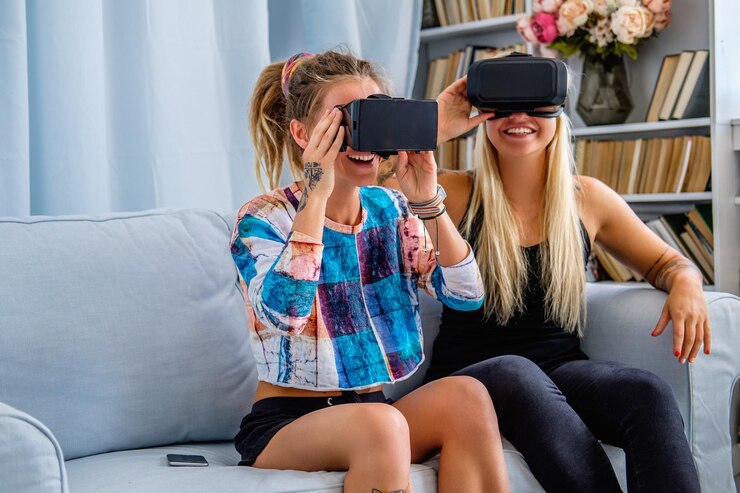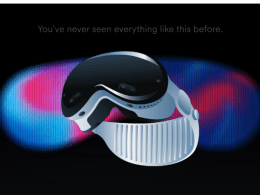Augmented reality (AR) integrates digital elements into the user’s real-world environment in real time. Unlike virtual reality (VR), which creates an entirely artificial environment, AR enhances the natural surroundings by overlaying digital visuals, sound, or other sensory information onto the user’s existing environment. By using devices such as smartphones, glasses, and headsets, AR creates an interactive experience where digital information is seamlessly combined with physical reality.
How Does Augmented Reality Work?

Augmented reality operates in various formats, including smartphones, glasses, and headsets. Devices like the Apple Vision Pro, Meta Quest 3, and AR-enabled smartphones demonstrate how AR can be accessed and experienced by everyday users. These devices are equipped with sensors, cameras, GPS, accelerometers, and compasses, enabling them to deliver AR experiences. AR apps typically use marker-based or marker less methods.
- Marker-based AR involves detecting specific visual markers to trigger digital content overlay.
- Markerless AR leverages recognition algorithms and sensors to identify objects and environments, allowing for seamless digital overlays.
Benefits of Augmented Reality (AR)
Enhanced Customer Experience
AR significantly enhances customer interaction, particularly in retail and e-commerce. For example, Ikea’s AR app enables users to visualize how furniture would look in their homes before purchasing, making the shopping process more engaging and informed. By merging digital and real-world elements, AR delivers immersive shopping experiences, boosting customer satisfaction and conversion rates.
Improved Navigation and Wayfinding
AR offers real-time navigation by overlaying directions onto a live view of the road or streets. Applications like Google Maps Live View use AR to guide users through unfamiliar areas, displaying routes over real-world environments. Additionally, AR navigation can provide information about local businesses, enhancing the convenience of exploring a new city.
Revolutionizing Education and Training
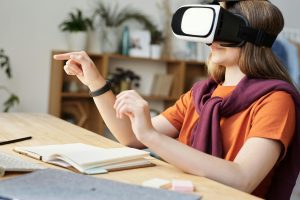
AR enhances learning experiences by making complex concepts more accessible. For example, Anatomy 4D, an AR app, allows medical students to study human anatomy with life-like 3D models overlaid onto textbooks or physical surfaces. In military training, AR simulations aid soldiers by overlaying battlefield scenarios onto the real world, enabling realistic combat training without the risk.
Increased Efficiency in Industrial Processes
AR streamlines industrial processes by providing real-time information to workers. For instance, Boeing uses AR for assembling complex wiring systems. By projecting visual instructions directly onto surfaces, AR reduces human error, speeds up assembly processes, and improves accuracy. Additionally, General Electric uses AR to help workers visualize equipment schematics, increasing productivity and reducing downtime.
Innovative Marketing Strategies
AR enables brands to deliver interactive marketing campaigns that engage users. For example, Snapchat’s AR filters allow brands to create unique filters that users can interact with in real time, amplifying brand visibility and customer engagement. AR-powered campaigns are known for their higher engagement rates, as users can interact with the product virtually before making a purchase decision.
Real-World Examples of Augmented Reality (AR)

Pokemon Go
Launched in 2016, Pokemon Go became a global phenomenon by blending gaming with the real world. Players use their smartphones to capture virtual creatures that appear in real locations, demonstrating the potential of AR in the gaming sector. It revolutionized mobile gaming, setting a benchmark for future AR-based games.
Google Glass
Google Glass was one of the first attempts at AR integration through glasses. While it was discontinued in 2023, it demonstrated the potential of hands-free, wearable AR. Major companies like DHL and DB Schenker adopted Google Glass to aid frontline workers with real-time information, such as logistics and customized shipping data.
Apple Measure App
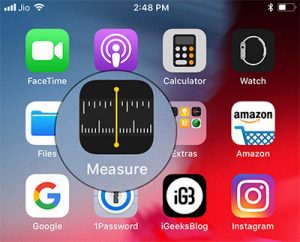
The Apple Measure App on iOS devices acts like a digital tape measure, allowing users to measure the distance between two points in their physical environment. It showcases how AR can be utilized for practical tools, making everyday tasks simpler.
Target’s ‘See it in Your Space’ Feature
Target’s retail app uses AR to let users visualize how items like furniture or décor would look in their home environment. This feature enables users to make informed decisions about their purchases, bridging the gap between online and in-store shopping experiences.
Case Studies: Success Stories with Augmented Reality (AR)
Ikea Place App
Ikea Place is one of the most successful examples of AR implementation in retail. By using ARKit, Apple’s AR development toolset, the app allows users to virtually place Ikea furniture in their homes. It not only improved customer engagement but also increased sales, with many users reporting higher confidence in purchasing decisions.
U.S. Army Tactical Augmented Reality (TAR)
The U.S. Army Tactical Augmented Reality (TAR) eyepiece is an advanced use of AR for military training. This device, mounted on soldiers’ helmets, overlays real-time data such as terrain maps, troop positions, and enemy locations. TAR significantly enhances situational awareness, reducing the risk of miscommunication and improving decision-making in high-stress environments.
Snapchat’s Lens Studio
Snapchat has mastered AR-driven marketing with its Lens Studio, which allows brands to create AR filters for users to interact with. Brands like Nike and Adidas have used AR filters for product launches, resulting in high user engagement rates and increased brand visibility on social media.
Differences Between Augmented Reality (AR) and Virtual Reality (VR)
While both AR and VR provide immersive digital experiences, they differ in how users interact with their surroundings:
- AR integrates digital content into the real-world environment, allowing users to interact with both digital and physical objects simultaneously. Devices like smartphones, AR glasses, and HUDs facilitate AR experiences.
- VR, on the other hand, creates an entirely simulated environment, isolating users from the real world. VR headsets like the Meta Quest 2 and Apple Vision Pro place users inside a 3D digital realm, often requiring more sophisticated hardware to achieve full immersion.
Future Advancements in Augmented Reality (AR)
The evolution of AR technology shows immense potential, with new advancements focused on improving user experience and device performance:
Lighter and More Powerful Devices
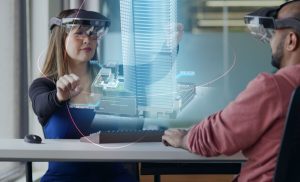
AR headsets and glasses are becoming slimmer and more ergonomic, with higher processing power. For example, the Meta Quest 3 is slimmer and more comfortable than its predecessor, while Apple’s Vision Pro aims to deliver seamless spatial computing experiences.
Integration with Artificial Intelligence (AI)
AI will play a crucial role in the future of AR, particularly in face and object recognition. AI algorithms will enhance AR experiences by making interactions more intuitive, such as recognizing gestures and enabling precise overlays of digital content.
5G Networks for Enhanced Connectivity
The expansion of 5G networks will allow faster and more reliable AR experiences, supporting cloud-based processing with lower latency. This will enable smoother AR applications, such as real-time navigation overlays or immersive virtual guides in tourism.
The Role of Augmented Reality (AR) in Various Industries
Healthcare
AR is revolutionizing healthcare by enabling medical professionals to visualize complex procedures. For instance, AccuVein, a handheld AR device, helps healthcare professionals locate veins for better accuracy during injections or IV placements.
Tourism
AR enhances the tourism experience by offering virtual guides and information overlays at historical sites. For example, visitors to the Colosseum in Rome can use AR apps to see reconstructions of the ancient site, enriching the visitor’s experience.
Public Safety
AR is used by first responders to enhance situational awareness. Firefighters, for example, use AR to visualize building layouts during rescue missions, improving decision-making and response times.
Final Thought
Augmented reality (AR) is transforming how we interact with digital content by seamlessly blending it with the real world. From retail and gaming to healthcare and military training, AR offers unparalleled opportunities for enhancing experiences and improving outcomes. As advancements in AI, device design, and 5G networks continue, the impact and capabilities of AR will only expand further, shaping the future of human-computer interaction.






